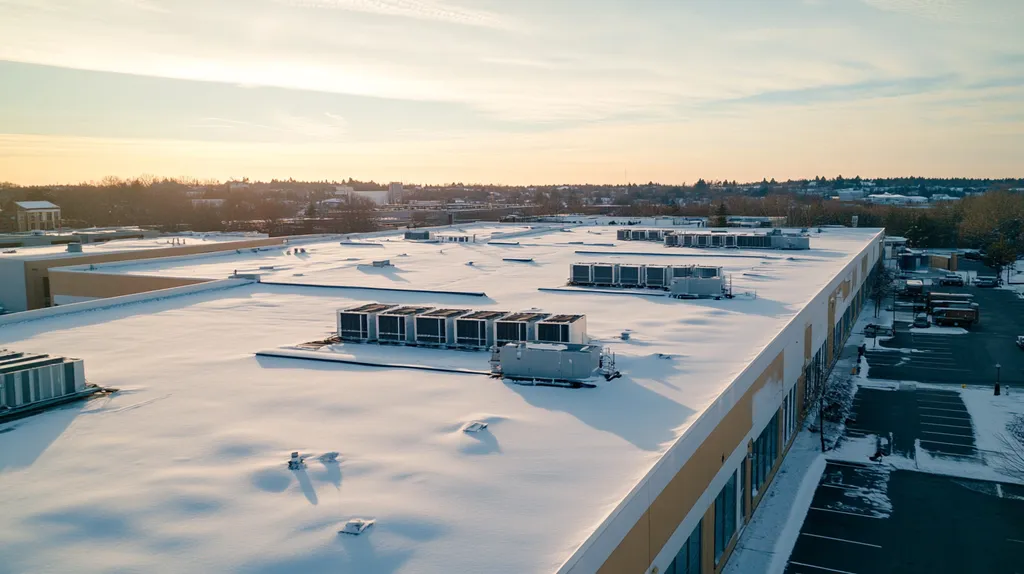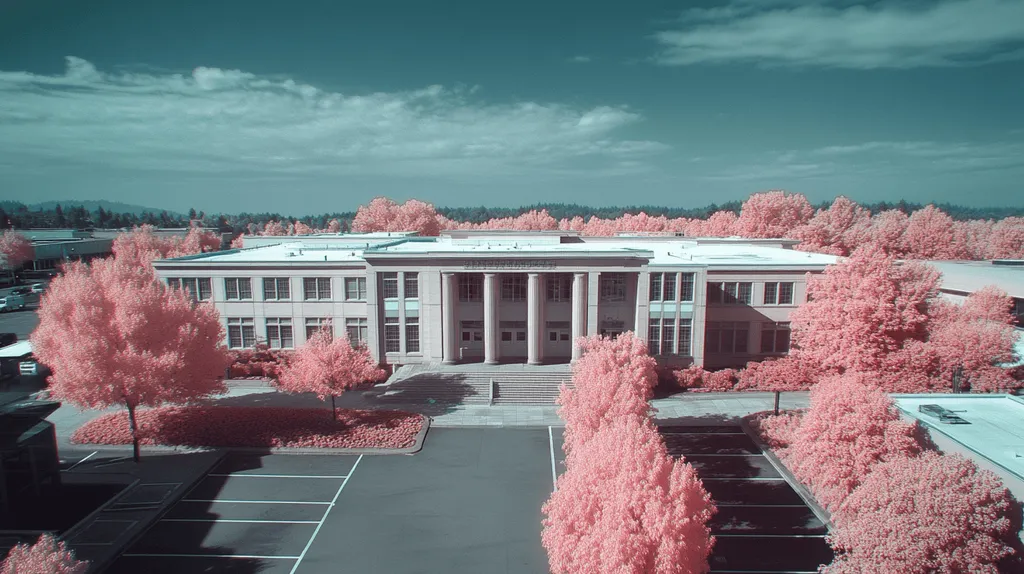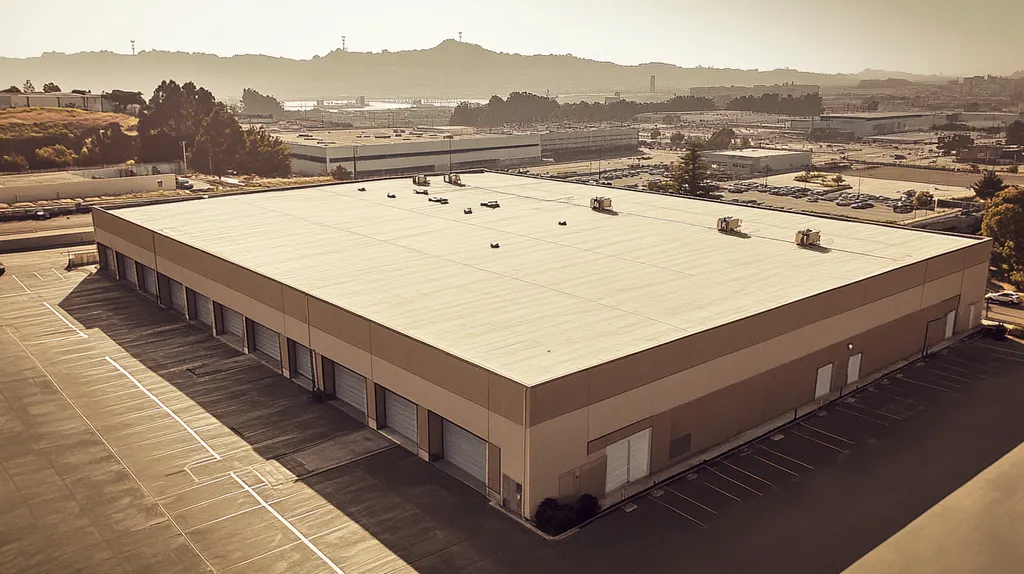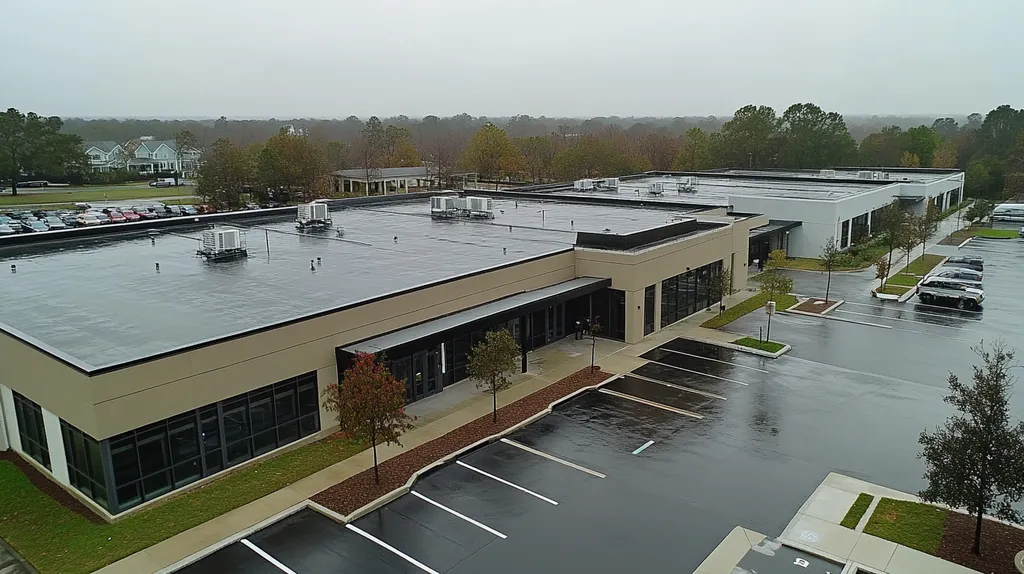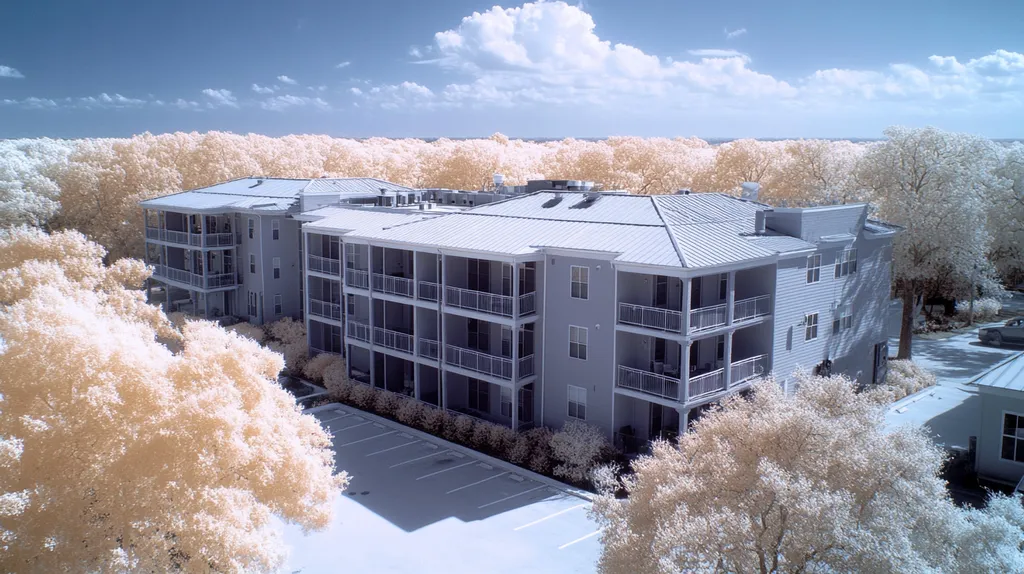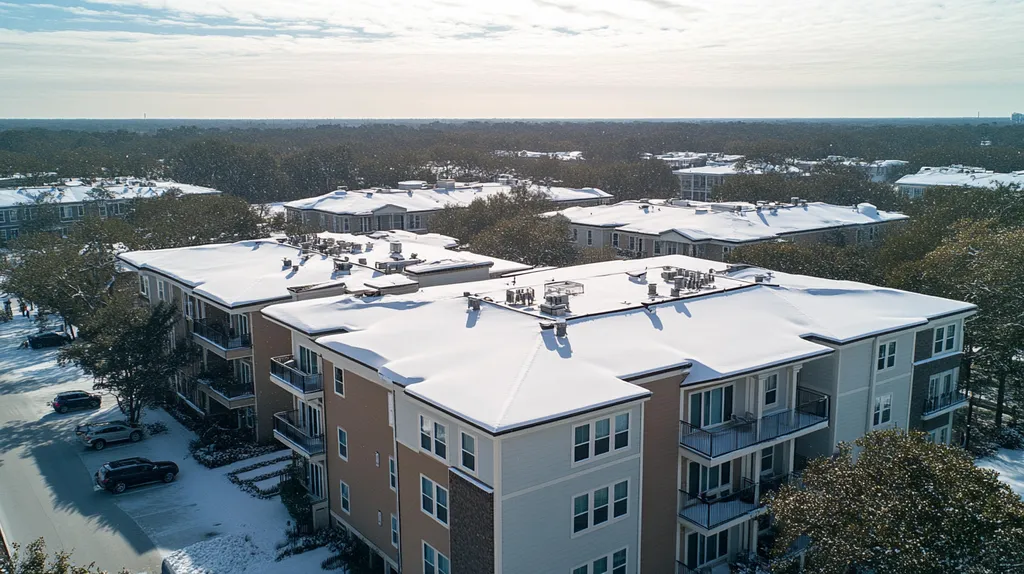Welcome to today’s Battle Royale featuring two roofing heavyweights: “Roof Penetrations” in the east corner versus “Pitched Roof Systems” in the west!
Tonight’s showdown pits these contenders against each other across six punishing rounds designed to test every aspect of their performance for Industrial Roofs Common Penetrations.
At stake? Millions in potential costs, decades of building protection, and the critical performance demands of modern commercial and industrial facilities.
Our professional judging panel will evaluate each round on technical merit, real-world performance, and value delivery. After all six rounds, we’ll declare our ultimate champion.
Ladies and gentlemen, facility managers and building owners… it’s time to rumble!
ROUND 1: INITIAL COSTS & INSTALLATION
When planning industrial roofing projects, understanding penetration requirements can make or break both budget and timeline. A properly designed system must accommodate essential building services while maintaining structural integrity and weather resistance. With material costs rising annually and skilled labor at a premium, choosing between flat and pitched systems requires careful analysis of three critical factors.
Material Expenses
Roof penetrations are necessary infrastructure elements that support critical building services, including HVAC systems, telecommunications equipment, and various utility connections. These openings require specialized materials and weatherproofing solutions to maintain roof integrity. (source: Jones Weatherproofing)
Flat roof systems with multiple penetrations demand premium materials like pre-fabricated boots, pitch pockets, and advanced membrane systems. These specialized components often carry higher price tags and may require specific storage conditions before installation.
Pitched roof systems typically utilize standard flashing kits and conventional materials that cost less and are readily available from multiple suppliers. The sloped design also reduces the complexity of waterproofing requirements around penetrations.
ADVANTAGE: Pitched Roof Systems
Installation Complexity
The complexity of installation directly impacts labor costs and project risk. Each penetration point requires precise cutting, fitting, and sealing to prevent future leaks and maintain building envelope integrity.
Flat roof installations demand extensive preparation and precise execution around each penetration. Crews must carefully coordinate multiple trades while maintaining strict adherence to manufacturer specifications for warranty compliance.
Pitched systems benefit from gravity-assisted water management, reducing the technical demands around penetration installations. Their standardized approach to flashing and simpler sealing requirements typically results in faster, more straightforward installations.
ADVANTAGE: Pitched Roof Systems
Project Timeline
Project duration significantly impacts both direct costs and business disruption. Weather sensitivity and crew coordination become particularly critical when managing multiple penetration installations.
Flat roof installations require extended periods for proper membrane preparation, penetration fitting, and cure times for sealants. Multiple inspection points and potential weather delays can stretch timelines considerably.
Pitched roof projects generally progress more rapidly due to simplified penetration details and reduced weather sensitivity. The faster installation pace helps minimize facility disruption and reduces exposure to weather-related delays.
ADVANTAGE: Pitched Roof Systems
ROUND 1 WINNER: Pitched Roof Systems
ROUND 2: DURABILITY & LIFESPAN
The longevity of industrial roofing systems directly impacts bottom-line facility costs, with penetrations representing critical vulnerability points. Studies show that properly managed roof penetrations can extend overall system life by 40%, while failed penetrations account for over 60% of premature roof replacements. Understanding how different systems handle these critical junctions helps facility managers make decisions that protect both the building and budget.
Durability of Roof Penetrations
Pipe penetrations represent one of the most frequent and challenging aspects of commercial roofing systems. These essential openings require specialized materials and precise installation techniques to maintain long-term performance. (source: MBCI)
Flat roof systems face particular challenges around penetrations due to water pooling and constant exposure to UV radiation. These conditions can accelerate deterioration of sealing materials and create stress points in the roofing membrane.
Pitched roof systems naturally channel water away from penetration points, reducing exposure to standing moisture. Their design also provides better protection against UV damage and helps distribute structural loads more effectively.
ADVANTAGE: Pitched Roof Systems
Lifespan Expectations
The expected service life of roofing systems varies significantly based on how well penetrations are managed. Industry data indicates that properly detailed penetrations can help roofs achieve their full design lifespan, while poor installations often lead to premature failure.
Flat roof systems typically last 15-20 years when penetrations are properly maintained. However, the higher number of potential failure points around penetrations can reduce this lifespan significantly without rigorous maintenance.
Pitched roof systems generally achieve 25-30 years of service, with some exceeding 40 years. Their superior water management and reduced stress on penetration points contribute to this extended lifespan.
ADVANTAGE: Pitched Roof Systems
Maintenance Requirements
Regular maintenance plays a crucial role in preserving roof system integrity, particularly around penetrations. The frequency and complexity of required maintenance directly impact operational costs and facility disruption.
Flat roof systems demand quarterly inspections of penetration points and annual resealing of critical junctions. This intensive maintenance schedule requires significant resource allocation and can disrupt facility operations.
Pitched roof systems typically need only annual inspections and less frequent maintenance around penetrations. Their design reduces debris accumulation and simplifies inspection procedures, lowering overall maintenance demands.
ADVANTAGE: Pitched Roof Systems
ROUND 2 WINNER: Pitched Roof Systems
ROUND 3: PERFORMANCE FACTORS
Performance factors can make or break an industrial roofing system, with penetrations representing critical vulnerability points that demand careful consideration. Modern facilities face increasing demands from equipment installations, environmental controls, and safety systems – each requiring strategic penetration planning. Understanding how different roofing approaches handle these challenges is essential for protecting both assets and operations.
Durability and Longevity
A roof’s durability directly impacts facility protection and operational continuity. Every penetration point introduces potential structural stress and weathering vulnerability that must be properly managed to maintain system integrity.
Roof penetrations are necessary infrastructure elements supporting critical building services including HVAC, telecommunications, and utility connections. A properly designed and installed penetration can match the lifespan of the surrounding roof material, but poor execution creates premature failure points. (source: Jones Weatherproofing)
Pitched roof systems naturally distribute stress loads and channel water away from penetration points. Their sloped design reduces material fatigue and extends system longevity by minimizing exposure to standing water and UV radiation.
ADVANTAGE: Pitched Roof Systems
Maintenance Requirements
Regular maintenance is essential for preserving roof integrity and preventing costly repairs. The frequency and complexity of required maintenance directly impacts operational costs and facility disruption.
Penetrations demand frequent inspection and maintenance to ensure weathertight seals and structural stability. Even minor degradation can lead to significant problems if left unchecked, requiring comprehensive monitoring programs.
Pitched systems simplify maintenance through improved accessibility and reduced debris accumulation around penetration points. Their design facilitates faster inspections and typically requires less frequent intervention.
ADVANTAGE: Pitched Roof Systems
Weather Resistance
Weather resistance capabilities determine how effectively a roof protects facility operations during severe conditions. Rising extreme weather events make this factor increasingly critical for long-term performance.
Each penetration presents a potential point of water intrusion during storms or heavy precipitation. While modern flashing and sealing technologies offer improved protection, multiple penetrations increase vulnerability.
Pitched roofing excels at weather resistance through active water management and reduced exposure at penetration points. The sloped surface quickly sheds precipitation and helps prevent ice damming around penetrations.
ADVANTAGE: Pitched Roof Systems
ROUND 3 WINNER: Pitched Roof Systems
ROUND 4: MAINTENANCE REQUIREMENTS
In today’s industrial facilities, roof maintenance can represent up to 40% of total building envelope costs. The stakes are particularly high around penetrations, where a single failure point can compromise entire systems and lead to catastrophic damage. Understanding the maintenance requirements for different roofing approaches has become critical as facilities face increasing mechanical system demands and more extreme weather patterns.
Inspection Frequency
Pipe penetrations represent one of the most critical maintenance challenges in commercial roofing, requiring specialized materials and precise inspection protocols to maintain system integrity. When properly maintained, these essential openings can match the lifespan of surrounding roofing materials. (source: MBCI)
Flat industrial roofs demand monthly visual inspections of penetration points and quarterly detailed assessments. Each penetration must be individually examined for signs of material degradation, seal integrity, and proper drainage patterns.
Pitched systems typically require only bi-annual comprehensive inspections. Their sloped design allows for easier visual assessment and naturally reduces the accumulation of debris around penetration points.
ADVANTAGE: Pitched Roof Systems
Repair Complexity
The complexity of penetration repairs directly impacts maintenance costs and facility downtime. Even minor issues require immediate attention to prevent escalation into major system failures.
Industrial roof penetrations often involve intricate flashing systems and specialized sealants that demand expert repair techniques. Multiple trades may need coordination for comprehensive solutions, especially when mechanical systems are involved.
Pitched roof repairs, while requiring additional safety measures, generally follow standardized procedures with readily available materials. Their simplified flashing designs reduce the technical complexity of most repairs.
ADVANTAGE: Pitched Roof Systems
Preventive Measures
Proactive maintenance strategies help prevent emergency repairs and extend system longevity. The effectiveness of preventive measures varies significantly between roofing approaches.
Industrial roofs benefit from comprehensive preventive programs that include periodic resealing, membrane reinforcement, and drainage maintenance. These systematic approaches help identify potential issues before they develop into problems.
Pitched systems rely more heavily on passive prevention through design, making active maintenance less critical. However, this can mask developing issues until they become serious problems.
ADVANTAGE: Industrial Roofs
ROUND 4 WINNER: Pitched Roof Systems
ROUND 5: SUSTAINABILITY CREDENTIALS
As environmental regulations tighten and energy costs soar, sustainability has become a critical factor in industrial roofing decisions. Studies show that roof penetrations can account for up to 40% of a building’s energy losses, making their proper management essential for both environmental compliance and operational efficiency.
Modern industrial facilities must balance increasing mechanical system demands with stricter environmental standards. The way penetrations are handled can dramatically impact a building’s carbon footprint, energy performance, and waste reduction goals.
Energy Performance
Pipe penetrations represent critical thermal bridges in commercial roofing systems, requiring specialized materials and precise installation techniques to maintain energy efficiency. These essential openings demand careful consideration to prevent heat loss and maintain building envelope performance. (source: MBCI)
Flat industrial roofs offer superior flexibility in positioning penetrations to optimize energy performance. Their design allows for strategic placement of mechanical systems and better integration of energy-efficient technologies like solar panels.
Pitched roof systems create inherent challenges for energy optimization around penetrations. While their slope helps with thermal performance, the angular installation of penetrations can compromise insulation effectiveness.
ADVANTAGE: Industrial Roofs
Material Sustainability
The environmental impact of roofing materials and their long-term sustainability has become increasingly important. Modern systems must demonstrate responsible material usage while maintaining performance.
Industrial roof systems typically utilize recyclable materials and can incorporate green roofing elements around penetrations. Their design allows for easier integration of sustainable components and future upgrades.
Pitched systems often require more raw materials due to their geometric requirements. While individual components may be recyclable, their overall material footprint tends to be larger.
ADVANTAGE: Industrial Roofs
Environmental Compliance
Meeting evolving environmental regulations requires careful attention to how roof penetrations impact building performance. Future-proofing against stricter standards has become essential for facility planning.
Industrial roofs excel at accommodating environmental compliance features. Their flexible design allows for easy integration of monitoring equipment and green technologies.
Pitched systems face greater challenges in adapting to new environmental requirements. Their fixed geometry can limit options for adding sustainability features or monitoring equipment.
ADVANTAGE: Industrial Roofs
ROUND 5 WINNER: Industrial Roofs
ROUND 6: SPECIALIZED APPLICATIONS
Modern industrial facilities face increasingly complex demands for specialized roof penetrations, with each new system requiring careful integration into the building envelope. Studies show that specialized penetrations can account for up to 35% of industrial roof failures when improperly installed or maintained. The stakes are particularly high as facilities expand their mechanical systems, add safety equipment, and upgrade communications infrastructure.
Equipment Mounting Systems
Equipment mounting represents one of the most challenging aspects of industrial roofing, requiring robust structural support while maintaining weathertight integrity. Modern facilities often need to accommodate increasingly heavy HVAC units, satellite dishes, and solar panel arrays.
Flat industrial roofs provide flexible positioning options for equipment mounts but demand extensive reinforcement and complex flashing systems. Each mounting point creates potential vulnerability requiring specialized boots and precise installation.
Pitched roof systems naturally distribute equipment loads more effectively and simplify water management around mounting points. Their sloped design reduces pooling risks and allows for standardized flashing solutions.
ADVANTAGE: Pitched Roof Systems
Safety Systems Integration
Industrial safety requirements mandate various roof-mounted systems including fall protection anchors, access ladders, and emergency equipment. These critical components must be securely installed without compromising roof integrity.
Flat roofs allow for more flexible placement of safety systems but require extensive reinforcement at each penetration point. The installation process often involves multiple trades and complex weatherproofing solutions.
Pitched systems provide natural attachment points and simplified flashing requirements for safety equipment. Their structural design typically requires less modification to support additional loads.
ADVANTAGE: Pitched Roof Systems
Process Ventilation
Industrial processes often require specialized ventilation systems that penetrate the roof structure. These systems must accommodate varying airflow requirements while preventing moisture infiltration.
Flat industrial roofs offer direct vertical paths for ventilation systems but face challenges with condensation management. Multiple penetrations can create maintenance complexities and increase the risk of water intrusion.
Pitched roof systems provide better condensation control through natural drainage patterns. Their design helps prevent moisture accumulation around vent penetrations and simplifies long-term maintenance.
ADVANTAGE: Pitched Roof Systems
ROUND 6 WINNER: Pitched Roof Systems
AND THE WINNER IS…
After six grueling rounds of technical analysis, this championship bout ends with a decisive victory! Ladies and gentlemen, with FIVE rounds claimed, your new Industrial Roofs Common Penetrations Champion is… PITCHED ROOF SYSTEMS!
The champion dominated through superior durability, simplified maintenance protocols, and exceptional performance in specialized applications. Its natural water-shedding abilities and standardized installation approaches proved nearly unstoppable in the ring.
But don’t count out Industrial Flat Roofs! This veteran contender showed impressive strength in sustainability credentials, proving particularly valuable for facilities requiring extensive mechanical systems or green technology integration.
Of course, every building represents its own unique matchup. Local climate conditions, structural requirements, and specific facility needs can dramatically impact performance outcomes. While tonight’s victory was decisive, building owners and facility managers should always consult qualified roofing professionals who can evaluate their particular situation before making final decisions.
Remember, champions – in the high-stakes world of industrial roofing, the real victory comes from choosing the system that best protects your specific facility’s long-term interests. Now get out there and make your roof work for you!
FREQUENTLY ASKED QUESTIONS
Q. What are the cost differences for a commercial roof installation?
A. The cost of installation varies significantly between roof types. Flat roofs typically demand higher material costs due to specialized components for penetrations, while pitched roofs generally use standard materials. This difference can affect both the total budget and timeline, making it essential to plan accordingly.
Q. How does penetration design affect an industrial roof’s durability?
A. Proper penetration design is crucial to roof longevity. When managed effectively, penetrations can contribute significantly to the overall durability. Poorly constructed penetrations, however, can create vulnerabilities that lead to premature roof failures, with pitched roofs generally providing better protection against water and stress.
Q. What are the performance advantages of a pitched roof system?
A. Pitched roof systems excel in performance through natural water drainage and minimized standing water, reducing potential leaks. This design also supports improved longevity and energy efficiency, as it channels moisture away from penetration points, effectively extending the life of the roof.
Q. How often should maintenance occur for commercial roofs?
A. Maintenance frequency depends on the roof type. Flat roofs typically require monthly inspections and quarterly assessments, while pitched roofs often need only bi-annual evaluations. Regular upkeep can greatly influence a roof’s lifespan, especially around penetration points.
Q. What role do penetrations play in sustainability for industrial roofs?
A. Properly managed penetrations are critical for sustainability as they can reduce energy losses significantly. They allow for efficient installation of energy-saving technologies, contributing to a building’s lower carbon footprint and supporting environmental compliance. Attention to detail in designing penetrations enhances overall efficiency.
Q. What are the challenges of specialized penetrations in industrial roofs?
A. Specialized penetrations can lead to significant roof failures if not handled correctly, accounting for a considerable portion of maintenance challenges. These penetrations must be carefully integrated to avoid compromising roof integrity. A well-designed system helps in maintaining structural stability and weather defense.
Q. How do different roof systems perform under extreme weather conditions?
A. Roof systems perform variably under extreme weather. Pitched roofs generally offer superior protection against water intrusion and ice accumulation, due to their sloped design. Flat roofs, while versatile, are more prone to water pooling, which can lead to significant long-term issues during severe weather events.

